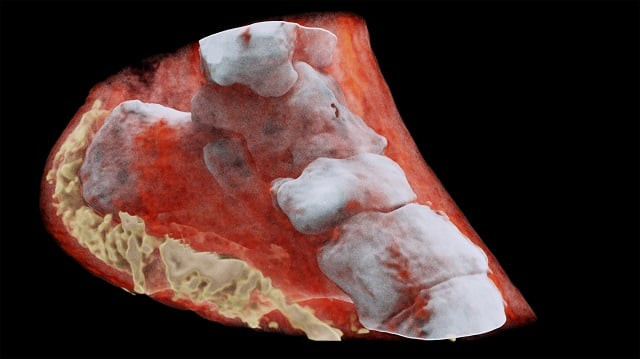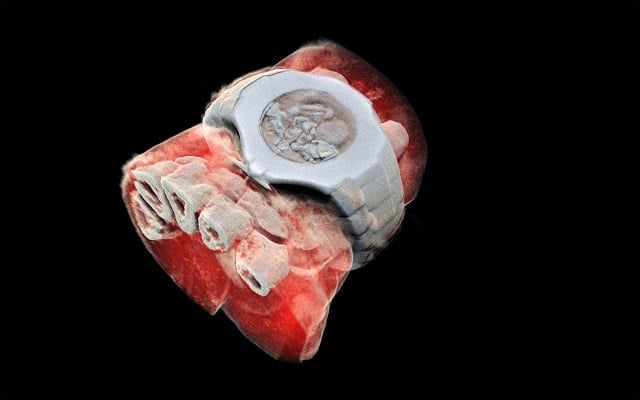First-ever colour X-ray on a human performed
The colour X-ray imaging technique will help doctors give their patients more accurate diagnoses, CERN statement says

This handout picture released on July 12, 2018 by MARS Bioimaging Ltd shows a 3D image of left view of an ankle with bones in white and soft tissue in red. PHOTO: AFP
The new device, based on the traditional black-and-white X-ray, incorporates particle-tracking technology developed for CERN's Large Hadron Collider, which in 2012 discovered the elusive Higgs Boson particle.
"This colour X-ray imaging technique could produce clearer and more accurate pictures and help doctors give their patients more accurate diagnoses," said a CERN statement.
The CERN technology, dubbed Medipix, works like a camera detecting and counting individual sub-atomic particles as they collide with pixels while its shutter is open.
Monster X-ray laser offers glimpse into nano-world
This allows for high-resolution, high-contrast pictures.
The machine's "small pixels and accurate energy resolution meant that this new imaging tool is able to get images that no other imaging tool can achieve," said developer Phil Butler of the University of Canterbury.
According to the CERN, the images very clearly show the difference between bone, muscle and cartilage, but also the position and size of cancerous tumours, for example.
 3-D, colour X-ray on a human, using a technique promising to improve the field of medical diagnostics, announced Europe's CERN physics lab. PHOTO: AFP
3-D, colour X-ray on a human, using a technique promising to improve the field of medical diagnostics, announced Europe's CERN physics lab. PHOTO: AFPThe technology is being commercialised by New Zealand company MARS Bioimaging, linked to the universities of Otago and Canterbury which helped develop it.



















COMMENTS
Comments are moderated and generally will be posted if they are on-topic and not abusive.
For more information, please see our Comments FAQ